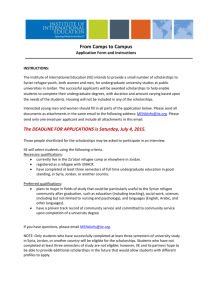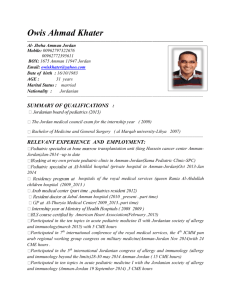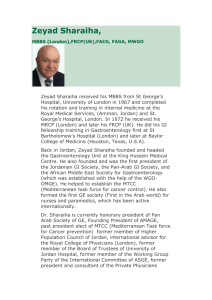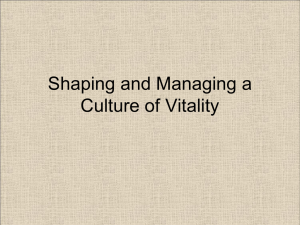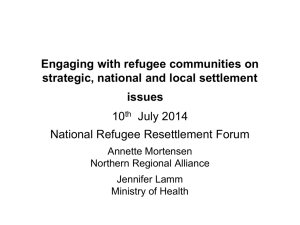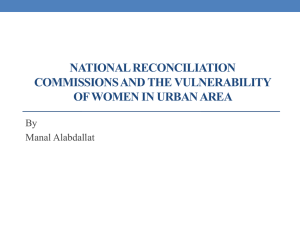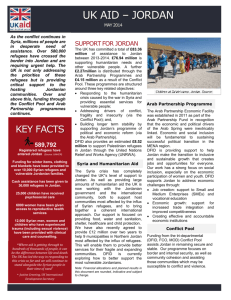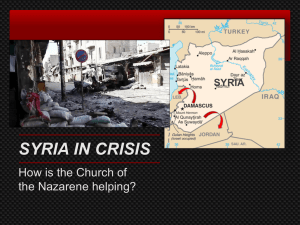See Bianca`s winning photo essay here.
advertisement
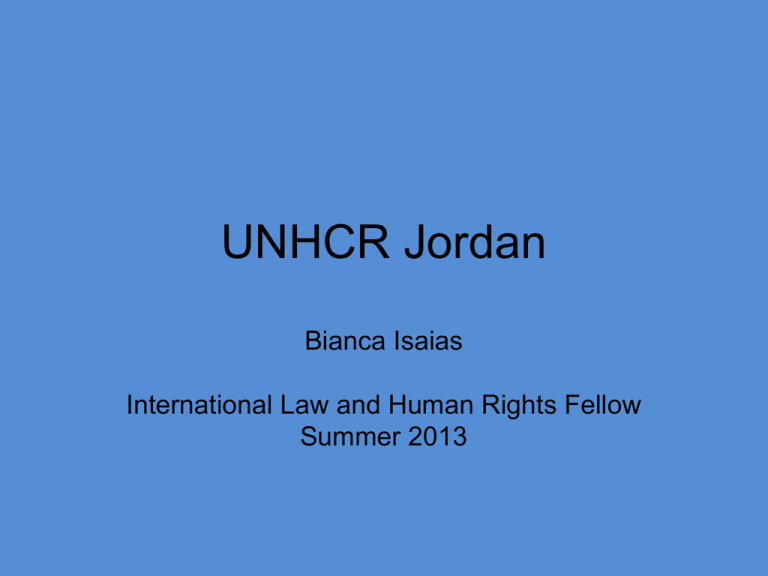
UNHCR Jordan Bianca Isaias International Law and Human Rights Fellow Summer 2013 My International Law and Human Rights fellowship with the United Nations High Commissioner for Refugees in Jordan had me working in Refugee Status Determination: both within the inclusion and exclusion teams tasked with applying the 1951 Refugee Convention and 1967 Protocol. Most of my work consisted of shadowing asylum seeker interviews and drafting legal assessments of individuals’ claims for refugee status. One of the most rewarding parts of my fellowship was the experience of working with extremely intelligent, knowledgeable, passionate, patient and friendly people. They were always eager to answer any questions (whether about the assessments I was writing, the inner workings of the UNHCR, or refugee law in various jurisdictions), allow me to shadow their interviews, and always made me feel like part of the team. Working with them was truly one of the best parts of this experience. At the opening of our new offices in Khalda, northern Amman. The office where I was stationed had been overwhelmed by the hundreds of Syrians who visited the office daily to register with the UNHCR. The new premises includes a seating area and bathrooms for those waiting to be attended. A vast improvement over sitting outside on the sidewalks in the baking sun, as in the Deir Ghbar office. During this opening, we also received a visit from Special Envoy Angelina Jolie, who gave a moving speech on the Syrian refugee crisis. Jordan is one of the most arid countries in the world. This has presented a particular problem for the Syrian crisis response, as the large amount of refugees require equally large amounts of water. Za’atari, the largest of the Syrian refugee camps, now comprises Jordan’s fourth largest city. In addition to the Refugee Status Determination work at UNHCR, there were plenty of other reminders, in unexpected places, about the volatile nature of the region. For example, this set of gas masks in a hotel in Aqaba – Jordan’s only port – from where one can see Israel, Egypt and Saudi Arabia. In fact, the West Bank is visible from most of western and central Jordan. This map in Mount Nebo lists the approximate locations and distances of cities in the territory. A five hour crossing from King Hussein/Allenby Bridge will get you to the West Bank. One of the many murals in Bethlehem is pictured above. This one is located in Manger Square, though most are on the wall that separates Israel from the West Bank and which surrounds the city of Bethlehem in its entirety, which restricts residents’ freedom of movement and prevents the city from expanding naturally in accordance with population increase. In addition to work, the Protection unit frequently got together, this included several pre-Ramadan barbeques. Ramadan was another first experience during the fellowship that introduced me to a new, spiritual relationship to food. Ramadan is the month during which God was said to have revealed the Quran to Prophet Mohammed, and it is marked by fasting during the daylight hours and acts of charity. During this holy Islamic month, it is illegal to eat, drink or smoke on the streets during the day according to Jordanian law. Though foreigners will only receive a dirty look, Jordanians are typically arrested if they are caught in violation of this law. Pictured above is a care package distributed by various Islamic organizations throughout Amman to drivers caught in the street during iftar (when the sun sets and the fast is broken). An iftar with mansaf, the traditional Jordanian dish made of rice, lamb, yogurt, pine nuts and other ingredients. Since Ramadan lasts one month, it’s said that the first week is for eating with family, the second week with friends, the third week with those you forgot during the first half of the month, and the fourth week is random as desperation for the fast to end sets in. As a former archaeology student, my fellowship in Jordan also allowed me to visit some truly incredible sites. These provided a window not only into the history of the country, but also present inhabitants’ relationship to their past. A large amount of the Jordanian economy relies on tourism. Ultimately, human rights work has not only allowed me to live through and understand the many cultural differences between North America and the Middle East, it has also highlighted our many commonalities. For example, coffee is as central to life in Jordan as it is to life in New York.
